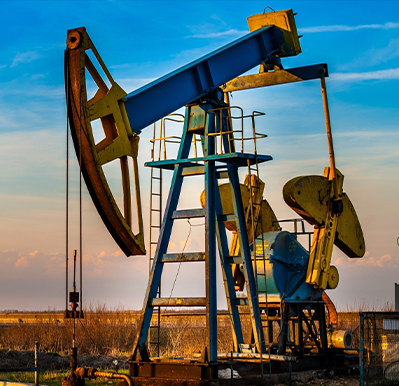- Afrikaans
- Albanian
- Amharic
- Arabic
- Armenian
- Azerbaijani
- Basque
- Belarusian
- Bengali
- Bosnian
- Bulgarian
- Catalan
- Cebuano
- Corsican
- Croatian
- Czech
- Danish
- Dutch
- English
- Esperanto
- Estonian
- Finnish
- French
- Frisian
- Galician
- Georgian
- German
- Greek
- Gujarati
- Haitian Creole
- hausa
- hawaiian
- Hebrew
- Hindi
- Miao
- Hungarian
- Icelandic
- igbo
- Indonesian
- irish
- Italian
- Japanese
- Javanese
- Kannada
- kazakh
- Khmer
- Rwandese
- Korean
- Kurdish
- Kyrgyz
- Lao
- Latin
- Latvian
- Lithuanian
- Luxembourgish
- Macedonian
- Malgashi
- Malay
- Malayalam
- Maltese
- Maori
- Marathi
- Mongolian
- Myanmar
- Nepali
- Norwegian
- Norwegian
- Occitan
- Pashto
- Persian
- Polish
- Portuguese
- Punjabi
- Romanian
- Russian
- Samoan
- Scottish Gaelic
- Serbian
- Sesotho
- Shona
- Sindhi
- Sinhala
- Slovak
- Slovenian
- Somali
- Spanish
- Sundanese
- Swahili
- Swedish
- Tagalog
- Tajik
- Tamil
- Tatar
- Telugu
- Thai
- Turkish
- Turkmen
- Ukrainian
- Urdu
- Uighur
- Uzbek
- Vietnamese
- Welsh
- Bantu
- Yiddish
- Yoruba
- Zulu
Nipple Tubing and Seating Solutions for Efficient Fluid Transfer Systems
Understanding Seating, Nipple, and Tubing in Oil and Gas Operations
In the oil and gas industry, efficient operations and well integrity are paramount. Among the essential components that facilitate these aspects are seating, nipple, and tubing, each playing a crucial role in the functionality and safety of well systems. This article delves into these components, their significance, and how they work together to ensure optimal performance in oil and gas extraction.
What is Tubing?
Tubing refers to a series of pipes used to transport hydrocarbons from the wellbore to the surface. It is the conduit through which oil and gas flow, and it is designed to withstand high pressures and corrosive environments found underground. Tubing comes in various sizes and grades, with specifications that depend on the well's depth, pressure, and the type of fluids being produced.
The choice of tubing is critical, as it must match the expected pressure and temperature conditions of the reservoir. The tubing installation process is meticulous; it involves running the tubing down to the production zone while ensuring proper alignment and integrity to prevent failures.
The Function of Nipple
The term 'nipple' in the oil and gas context refers to a short section of pipe that connects different components of a well, such as the tubing and the wellhead or other fittings. Nipples can be used for various purposes, including connecting multiple sections of tubing or providing an interface between tubing and the downhole equipment.
Nipples are available in various designs, including threaded and welded configurations, to enhance connectivity and minimize the risk of leaks. The critical role of nipples lies in their ability to facilitate quick changes in the flow path or to accommodate additional equipment as production needs evolve, making them indispensable in well operations.
seating nipple tubing

Seating Mechanisms
Seating plays a vital role in ensuring that the components of the wellbore, including the tubing and nipple, function effectively. In well completion, a seating mechanism ensures that a component fits correctly and securely into its designated position, providing a robust seal to prevent leaks. The most common application of seating in this domain is found in packers, which are devices that create a seal in the wellbore to isolate sections of the reservoir or to enable production in specific zones.
A proper seating arrangement is critical for maintaining downhole pressure and preventing undesired flow of fluids from other formations. This feature not only enhances safety by reducing the risk of blowouts but also improves the overall efficiency of hydrocarbon extraction.
The Interrelation of Components
The interaction between seating, nipple, and tubing is essential in maintaining the overall integrity of the well. Each component must be designed to meet rigorous engineering standards and to coordinate effectively with the others. For example, the specific nipple type and size must be compatible with the tubing to prevent failure during high-pressure conditions.
Furthermore, regular inspections and maintenance of these components are crucial for assuring reliability. Any wear or damage can lead to significant production losses, safety hazards, and costly repairs. Therefore, adhering to best practices in seating, nipple, and tubing selection and maintenance is essential for maximizing the lifespan and productivity of oil and gas wells.
Conclusion
In summary, seating, nipple, and tubing are fundamental components in the architecture of oil and gas wells. Their robust design and strategic integration play a vital role in safeguarding well integrity and optimizing production efficiency. Understanding these elements and ensuring they function synergistically are paramount for successful operations in the upstream sector of the oil and gas industry. As technology advances, ongoing innovations will continue to enhance the performance and reliability of these critical components, ultimately driving sustainability and profitability in energy production.
-
Tubing Pup Joints: Essential Components for Oil and Gas OperationsNewsJul.10,2025
-
Pup Joints: Essential Components for Reliable Drilling OperationsNewsJul.10,2025
-
Pipe Couplings: Connecting Your World EfficientlyNewsJul.10,2025
-
Mastering Oilfield Operations with Quality Tubing and CasingNewsJul.10,2025
-
High-Quality Casing Couplings for Every NeedNewsJul.10,2025
-
Boost Your Drilling Efficiency with Premium Crossover Tools & Seating NipplesNewsJul.10,2025







